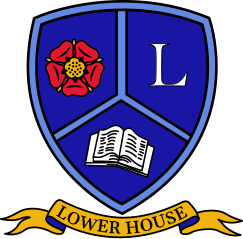English - Phonics
Phonics is a method of learning to read. Phonics works by breaking each word up into its individual sounds before blending those sounds back together to make the word. Children learn to 'decode' words by breaking them down into sounds (phonemes) rather than having to memorise 1,000's of words individually. Research has shown that phonics, when taught correctly, can be the most effective way of teaching children to learn to read. Learning phonics and learning to read is one of the most important stepping stones in early education and provides your child with the skills that they need to be able to access the curriculum.
At Lowerhouse Junior School, we follow the Lancashire Red Rose Letters and Sounds programme, which continues previous work from Rosegrove Infant School. The Red Rose Phonics programme not only follows the DFE Letters and Sounds approach, but ensures a systematic, synthetic phonics approach is both planned for and delivered to your child. The Red Rose Phonics programme is divided up into four phases that the children will progress through; usually from Reception to the end of Key Stage 1 but continued for children needing extra support in Key Stage 2.
Intent
At Lowerhouse Junior School, we value reading and writing as a life skill, and are dedicated to enabling our pupils to become lifelong readers. Through a structured and consistent approach to the teaching of phonics using the Red Rose Letters and Sounds programme, pupils acquire phonic knowledge and build on previous learning. They are then able to apply this knowledge when reading carefully matched texts. We ensure pupils develop the phonetic skills and knowledge required to become a confident and fluent reader.
Implementation
Our phonics provision aims to impact children in the following ways:
- Children will become fluent readers building on skills learnt in Key Stage One.
- Once children have become fluent readers, we focus on the main reading domains that are applicable for Key Stage 2 and developing reading resilience and comprehension.
- Children will have the opportunity to enter the world that books provide them, promoting reading for pleasure as part of our reading curriculum. Children are encouraged to develop their own love of genres and authors and to review their books objectively. This enhances a deep love of literature across a range of genres, cultures and styles.
As a school, we monitor the impact of our phonic provision through lesson observations, pupil voice and monitoring of reading. This may be include reading records and reading response books and may vary according to the age and needs of the child.
